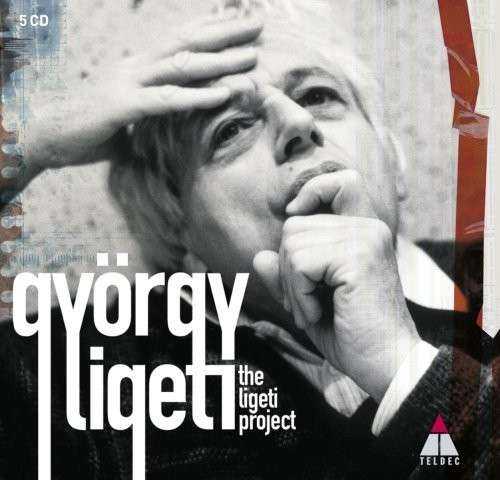
Audio CD
SPARS Code: DDD
Number of Discs: 5 CD box set
Format: FLAC (image+cue)
Label: Warner Classics
Size: 1.2 GB
Recovery: +3%
Scan: yes
Disc 1
1. Melodien
Chamber Concerto
2. I Corrente
3. II Calmo, sostenuto
4. III Movimento preciso e meccanico
5. IV Presto
Piano Concerto
6. I Vivace molto ritmico e preciso
7. II Lento e deserto
8. III Vivace cantabile
9. IV Allegro risoluto, molto ritmico
10. V Presto luminoso
11. Mysteries of the Macabre
Pierre-Laurent Aimard, piano (6-10)
Peter Masseurs, trumpet (11)
Schönberg Ensemble, Asko Ensemble. Reinbert de Leeuw, conductor
Disc 2
1. Lontano
2. Atmosphères
Apparitions
3. I Lento
4. II Agitato
5. San Francisco Polyphony
Romanian Concerto
6. I Andantino
7. II Allegro vivace
8. III Adagio, ma non troppo
9. III Molto vivace
Berliner Philarmoniker. Jonathan Nott, conductor
Disc 3
Cello Concerto
1. I
2. II
3. Clocks and Clouds
Violin Concerto
4. I. Vivacissimo luminoso
5. II. Aria, Hoquetus, Choral. Andante con moto
6. III. Intermezzo. Presto fluido
7. IV. Passacaglia. Lento intenso
8. V. Appassionato. Agitato molto
Sippal, dobbal, nádihegedüvel: Weöres Sándor verseire
9. I. Fabula
10. II. Táncdal
11. III. Kínai templom
12. IV. Kuli
13. V. Alma alma
14. VI. Keserédes
15. VII. Szajkó
Siegfried Palm – cello (1, 2)
Frank Peter Zimmermann – violin (4-8)
Katalin Károlyi – mezzo-soprano (9-15)
Asko Ensemble, Schönberg Ensemble. Reinbert de Leeuw, conductor (1, 2, 4-8)
Capella Amsterdam. Daniel Reuss, conductor (3)
Amadinda Percussion (9-15)
Disc 4
Hamburg Concerto
1. I. Paraludium
2. II. Singale, Tanz, Choral
3. III. Aria, Aksak, Hoketus
4. IV. Solo, Intermezzo, Mixtur, Kanon
5. V. Spectra
6. VI. Capricco
7. VII. Hymnus
Double Concerto
8. I. Calmo, Con Tenerezza
9. II. Allegro Corrente
10. Ramifications for 12 Solo Strings
Requiem
11. I. Introitus. Sostenuto
12. II. Kyrie. Molto Espressivo
13. III. De Die Judicii Sequentia. Subito: Agitato Molto
14. IV. Lacrimosa. Molto Lento
Caroline Stein, Soprano Voice (11-14)
Heinz Holliger, Oboe (8-9)
Jacques Zoon, Flute(8-9)
Margriet Van Reisen, Mezzosoprano Voice (11-14)
Marie Luise Neunecker, Horn (1-7)
Asko Ensemble, Schönberg Ensemble. Reinbert De Leeuw, Conductor (1-10)
London Voices, Berliner Philarmoniker. Jonathan Nott, Conductor (11-14)
Disc 5
Aventures, NouvellesAventures
1. Aventures
2. Nouvelles Aventures I
3. Nouvelles Aventures II
4. Artikulation for Tape
Eight Pieces from “Musica ricercata”
5. I Sostenuto
6. II Allegro con spirito
7. III Tempo di Valse (poco vivace – S I’orgue de Barbarie)
8. IV Con moto, giusto – Cantabile, mofto legato
9. V Vivace. Energico
10. VI (Bela Bartok in memoriam) Adagio. Mesto – Allegretto maestoso
11. VII Vivace. Capriccioso
12. VIII (Omaggio a Girolamo Frescobaldi) Andante misurato e tranquillo
Sonata for Cello Solo
13. I Dialogo. Adagio, rubato, cantabile
14. II Capriccio. Presto con slancio
15. The Big Turtle Fanfare from the South China Sea
Ballad and Dance
16. Andantino
17. Allegro vivace, energisch
18. Regi magyar tarsas tancok (Old Hungarian Ballroom Dances)
Sarah Leonard, soprano (1-3)
Linda Hirst, mezzo soprano (1-3)
Omar Ebrahim, baritone (1-3)
Wax Bonnay, accordion (5-12)
David Geringas, cello (13-14)
Peter Masseurs, trumpet (15)
Asko Ensemble, Schbnberg Ensemble, Reinbert de Leeuw, Conductor (1-3,16-18)
the_ligeti_project02.rar – 230.0 MB
the_ligeti_project03.rar – 259.2 MB
the_ligeti_project04.rar – 245.9 MB
the_ligeti_project05.rar – 295.7 MB
Like Beethoven and Stravinsky, Ligeti’s output divides rather neatly into three distinct style periods. First are the early works from Ligeti’s pre-flight years. These are a combination of juvenilia, Eastern European folklorist works, pieces inhabiting a Bartókian sound world, and the occasional bit of internationalist or modernist experimentation that hints at what was to come. Most of these works are of minor importance beyond the world of Ligeti immersion. But a handful, such as the First String Quartet, and a few of the movements from Musica Ricercata, are worthy of his more mature works.
The heart of Ligeti’s output, and the basis for the consensus that places him among postmodernism’s greatest composers, is the series of masterworks written during his middle period which lasted from roughly 1957 (after his escape from Hungary) to 1977 (marked by the completion of his opera Le Grand Macabre). The “sound surface” compositions from the period, including Atmosphères, the Requiem, Lux Aeterna and much of the Second String Quartet, fall into a genre of acoustic music that was not unique to Ligeti — it’s also associated with Penderecki and Xenakis, and more peripherally with composers like Lutosławski — but Ligeti was arguably the greatest of the lot. Central to this musical language is the elevation of timbre as the most important musical parameter, supplanting the traditional pitch-priority that had been dominant in Western art music since its inception. Ligeti’s vocabulary in these works consists largely of tone clusters, either in sustained notes, or as the unfolding of many rapidly moving chromatically undulating lines, in both cases creating a composite texture where the primary impression is of the resulting tone color, rather than the melodic or harmonic implications of any individual instrumental line. It was this music that was brought to wider attention through its use to accompany the monolith and stargate sequences in 2001: A Space Odyssey, leading many to think of it as “space music”.
Other works from this period follow a model developed in Aventures and Nouvelles Aventures, which are closer to the serial pointillist style of many post-WW2 composers, but with an emphasis on color and rhythmic gestures in a way characteristic of Ligeti (and more musically interesting than many of the more formulaic works of Ligeti’s colleagues). A third kind of work from this period explores polymeters and rhythmic phase patterns. In the former category falls the third movements from the both the Chamber Concerto and Second String Quartet. In the latter category would be Continuum and the Three Pieces for Two Pianos.
Le Grand Macabre, by far the lengthiest of Ligeti’s works, represented a culmination of his middle period work, and additionally introduced an element of postmodern pastiche. After this, Ligeti seemed to feel that he had reached a dead end. Not wanting to go on rewriting works like Atmosphères and Aventures over and over, Ligeti, like Beethoven, fell relatively silent for a few years. Then, in 1982, the Horn Trio, followed by the first of the piano etudes, launched a third style period. These late works represent somewhat of a conservative retrenchment from Ligeti’s more experimental middle period works, in rather the same way that Stravinsky’s neoclassical period represented a step back from the experimentation of his youth. Many of Ligeti’s late works, including the Horn Trio, are unabashedly neoclassical, and return to an emphasis on pitch-priority and musical gestures. Still Ligeti resisted the most hackneyed temptations to which some of his colleagues succumbed (e.g., Penderecki’s and Rochberg’s attempts to time travel back to the 19th century).
Several of these late works have found considerable favor with performers, as they are generally (but not always!) easier to perform, eschew the extended playing techniques of Ligeti’s earlier works, and are less challenging for casual listeners. But I’m confident that Ligeti’s historical legacy will ultimately depend on posterity’s judgment of his middle period works, rather than the more conventional compositions written between 1982 and the end of his career in roughly 2002.
Teldec’s Ligeti Project comprises five CDs that focus mainly on the large ensemble works left behind when Sony’s Ligeti Edition fizzled out after 1996. Taken together, as other reviewers have pointed out, these five Teldec/Warner albums and the eight Sony albums give you almost the entire Ligeti oeuvre. Some piano music is missing: three of the four Piano Etudes from Book 3, the Three Bagatelles for David Tudor (from 1961, consisting of a single note), and a work of juvenilia called Chromatic Fantasy that Ligeti withdrew but is still worth a listen. Also missing is the string orchestra version of Ramifications (though you do get the version for 12 solo strings in LP4), and the tape piece Glissandi from 1957 (which may have been withdrawn by the composer, but is still available on an old Wergo recording). A third short tape piece, simply called Pièce Électronique No. 3, was sketched in 1958, but not realized until a 1996 residency in the Netherlands. Also nice to have is the original German version of Le Grand Macabre, which you might be able to track down from another Wergo recording. A single-LP edition from Wergo condensed the opera to half its length, a concise and very enjoyable version, but one not currently available on CD as far as I can tell.
But back to Teldec’s contribution: with this five-CD boxed set, you get all the liner notes from the five standalone Ligeti Project CDs, but not the accompanying photos and score excerpts. The latter in particular is a shame, since examining a Ligeti score can be highly illuminating. Unlike Penderecki, Cage and Stockhausen, Ligeti always used conventional musical notation, and often notated music in 4/4 time even when no pulse was supposed to be heard. One such example is the excerpt from the Kyrie of the Requiem (supplied in LP4 but missing from this set). In addition to being in 4/4, it clearly shows the division of the chorus into five sections (rather than the customary four) with each one representing a fugal voice that is in turn comprised of a kind of four-part canon in augmentation where the clusters fan out from a single unison starting pitch. Nevertheless, purchasing the box set has its advantages: you’ll take up about one-third the space on your CD shelf, and you’ll probably get a nice discount over buying all five albums individually (though some will suggest, with justification, that the fifth CD is largely redundant).
Nevertheless, if you’re interested in Ligeti, this set is something of a no-brainer, featuring a few hours of the composer’s finest work. Scoop up the Sony disks too while you can, and maybe add one of the CD sets of Ligeti’s complete piano music to pick up the missing keyboard works, giving you a more-or-less complete collection.
If dollars are a little scarce, or you’re not a convinced Ligeti fan/completist, you might consider getting only LP2, LP4 and LE1. Add either LP5 or LE4 for Aventures and Nouvelles Aventures, and perhaps LE6 for the harpsichord, organ and piano duo pieces, and you’ll have most of the essential works in a few CDs. Or indulge in the four-CD Deutsche Grammophon set, and you’ll accomplish much the same thing for roughly the same price. The DG disks have the advantage that every track is an important piece of music (no early period fluff to contend with), but this does make it harder to add in the missing pieces later if you want to fill out your collection. Either way, sit back with open ears and mind, some good headphones and a quiet place — and scores if you can find them at your local library — and transport yourself back to the heady days of the 1960s or 1970s, imagining (or reliving) being blown away by hearing these sounds for the first time.
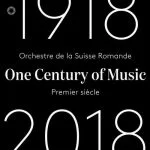
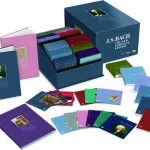
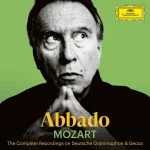
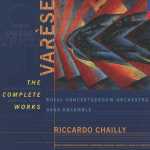
Amazing. Thank you, again and again, Mr Whatever.
I do feel that my “thank you” is the least I can do for all the work you’ve done on this site, bringing us so much amazing music. One of these days I’ll get together the funds for a nice donation. Until then… I give you a resounding thank you, you’ve shared such wonderful art with us. You are appreciated.
Thank you very much!!!
Many, many heartfelt ‘thanks’ for the re-up ! :mrgreen:
So good of you to restore this! Thanks, Dr. Whatever! :grin:
Nice to be back, Ligeti is great !
The Ligeti’s music is very, very great. Thanz you very much for reuploaded.
i am happy you have re-upped, many thanks Peter
Kudos for re-upping this!
:lol:
Thank you! :wink:
Dear Sir, I want to thank you for your work.
If you ever need any help, please contact me and I will be willing to do so.
Sincerely
good music thank.~
thanks a lot :)
Thank You!!!
Thank you for the beautiful music!
seems superflous much of the time to leave any comment save thanks – such is the quality of your uploadfs [ but i am to be counted as a friend of your site – altho of poor means £’s or rubles i have expressed my gratitude several times via paypal
this ligeti post is unexpected and beautiful TANK YOU!!!!!!!!!!!!!
graham
tssssssssssssssssssssssssssssssssssssssssssss Ligeti tsssssssssssssssssssssss =D=D=D=D= thnx thnx thnx